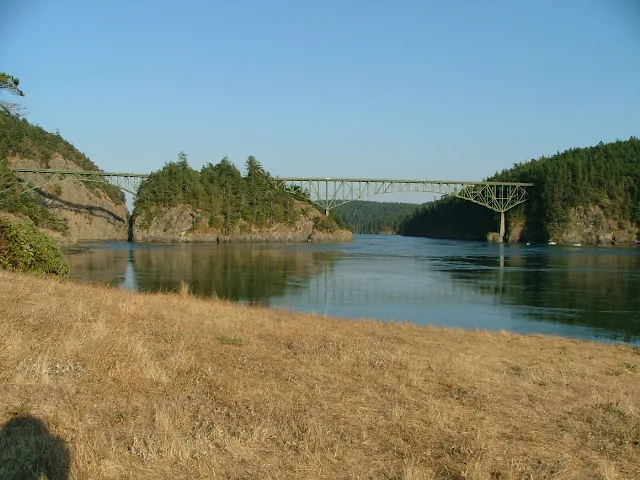Deception Pass is located in Deception Pass State Park in Washington. It is notorious for strong tidal currents and swirling eddies and is the starting point for many going to the San Juan Islands
The pass can be treacherous for boaters and kayakers. But in reality, it is not much different than Cattle Pass, Thatcher Pass or Peavine Pass. Here are some tips for navigating safely.
 |
Looking inbound at what actually is two separate bridges.You can see narrow slot of Canoe Pass on left side, Deception Pass on right side. |
First, let's understand that in the San Juans, Puget Sound, Gulf Islands, pretty much everywhere, there are nasty places where you can get into trouble if you are prone to doing stupid things. Driving into a storm or wild surf with breaking waves is a mistake for most of us regardless of our boat or skill level.
That being said, the rising/falling tides cause currents. Large tide ranges usually mean faster currents. Narrow passes or jutting headlands tend to intensify things. Add to that, strong winds and storms and you get places to avoid on your vacation cruise.
